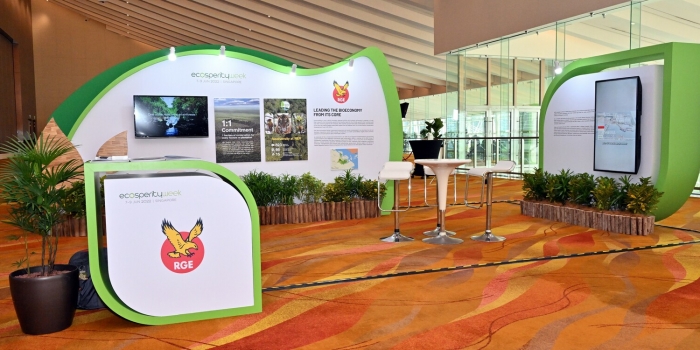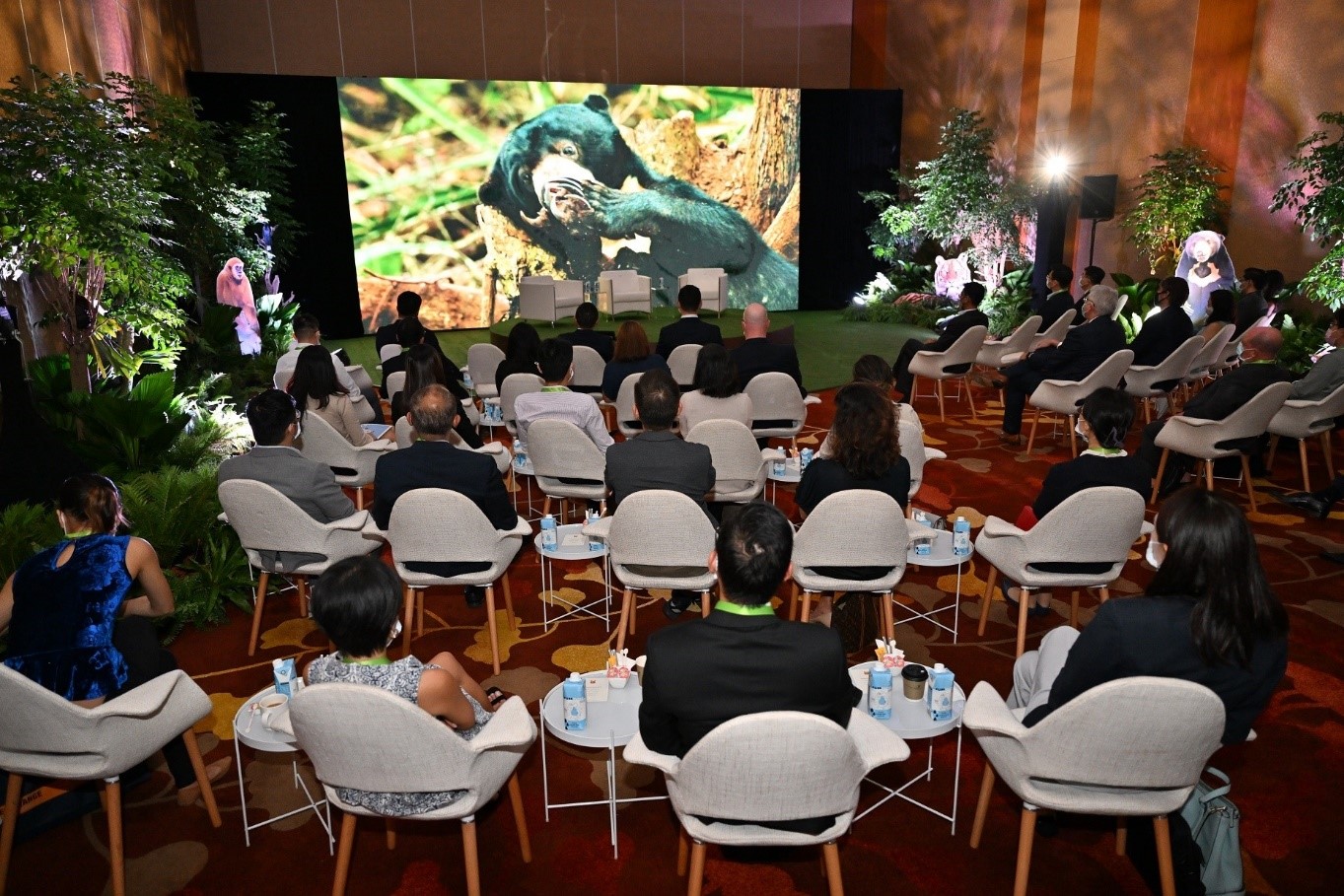Building Inclusive Growth: Entrepreneurs from Kerinci
Sulaiman and Muhammad Sarkawi were both born and raised in Kerinci. Today, both have their own businesses. Sulaiman is 38 years old and supplies coco peat which is used as...

Latest updates on what's happening in RGE Group

Businesses are increasingly recognising that nature-based solutions have a role to play in carbon-offsetting as part of their holistic abatement strategy in achieving net-zero targets. While there are a number of such carbon projects in the market that businesses can invest in, few are able to demonstrate the carbon credits generated are credible, legitimate and meaningful.
So how can businesses access credible carbon credits as they work towards net-zero emissions? RGE’s Managing Director Anderson Tanoto shared his thoughts at a panel discussion titled “The Real Returns on Carbon”, a fireside chat session at Ecosperity Week 2022, organised by Temasek at Marina Bay Sands Singapore.
RGE was one of the headline sponsors at Ecosperity and had a booth showcasing our company’s key sustainability initiatives. The fireside chat, held on 9 June 2022, also featured Professor Koh Lian Pin, Director of NUS-Centre for Nature-based Climate Solutions (NUS-CNCS). He focuses on the research and development of forest carbon accounting technologies.
During this session, Mr Tanoto shared how and why the private sector should lead conservation and restoration efforts as we work towards a greener future and Professor Koh spoke about carbon credits, focusing on using technology and innovation to determine their quality.
Carbon Credits: Purpose and Quality are Key
Professor Koh commented that the carbon market provides an important way to shift capital from businesses in operation into conservation and restoration, adding that quality is also key. There are three important aspects to be considered when determining the quality of carbon credits:
To improve the way we measure the quality of carbon credits, Professor Koh suggested developing better metrics and higher quality standards. Metrics should be simple, measurable, repeatable, quantifiable, and representative of the ecosystem.
“One of the reasons why we are working closely with APRIL on its Restorasi Ekosistem Riau (RER) site is because of the many programmes it has put in place to collect data over many years. RER is essentially very advanced for carbon monitoring. On-the-ground, in-depth data allows us to calibrate new ways of estimating carbon emission.” – Professor Koh.
Mr Tanoto pointed out there is an opportunity to integrate new technology into metrics for carbon credits — from Light Detection and Ranging (LIDAR) technology to digital surface modelling and digital terrain modelling — to verify quality cost effectively and at scale. It used to entail days of trekking into the dense forest and rudimentary equipment to measure the trees, he added.
True Carbon Value Lies in Conservation and Biodiversity Gain
Mr Tanoto believes that the real returns on carbon are the positive impacts on landscape protection and restoration. It is the investment in restoration and conservation that generates carbon value and delivers a return in biodiversity gain, funding additional forest conservation and restoration as well as offsetting emissions from business activities.
He shared the approach taken by APRIL, a member of the RGE group of companies, to ensure that landscapes, forests, biodiversity and the communities that nature-based climate solutions support, are part of the quality equation. All these factors together contribute to the actual quality of carbon stores and their value.
As part of its commitment to managing its climate impact, APRIL established the Restorasi Ekosistem Riau (RER) project in 2013 as a collaborative project and multi-year commitment to restoring and conserving ecologically important peat forest areas in Indonesia’s Kampar Peninsula. The project was implemented in collaboration with Fauna & Flora International (FFI), Bidara, and The Nature Conservancy.
APRIL also works closely with NUS-CNCS under the RER to improve the identification of quality carbon credits. Professor Koh said the collaboration has found new ways of measuring carbon by drawing on APRIL’s advanced carbon monitoring technologies and data collected from APRIL’s forests. It will culminate in two key deliverables — a hydrological and carbon model driven by remote sensing products which will be completed by July 2023, and a near-real-time visualisation dashboard which is due for completion by July 2024.

“Frontier Sumatra”, an independent film on Discovery Asia, which tells the incredible story of the people, wildlife and the land of Kampar Peninsula in Riau, Sumatra, was screened at the end of the fireside chat.
Looking Towards a Greener Future
To achieve a lower-carbon economy, both public and private sectors need to cooperate. Specifically, Mr Tanoto said: “The private sector has to play a larger role in conservation and restoration, which require patient capital, consistent capital and commitment. Private sector organisations can invest in natural climate solutions by protecting and conserving high conservation value or high carbon stock areas such as RER, purchase and commit to high quality carbon credits, and support business model development and technical innovation for carbon project design, implementation, and verification.”
“These efforts will help ensure that our forests remain for future generations to enjoy,” he concluded.